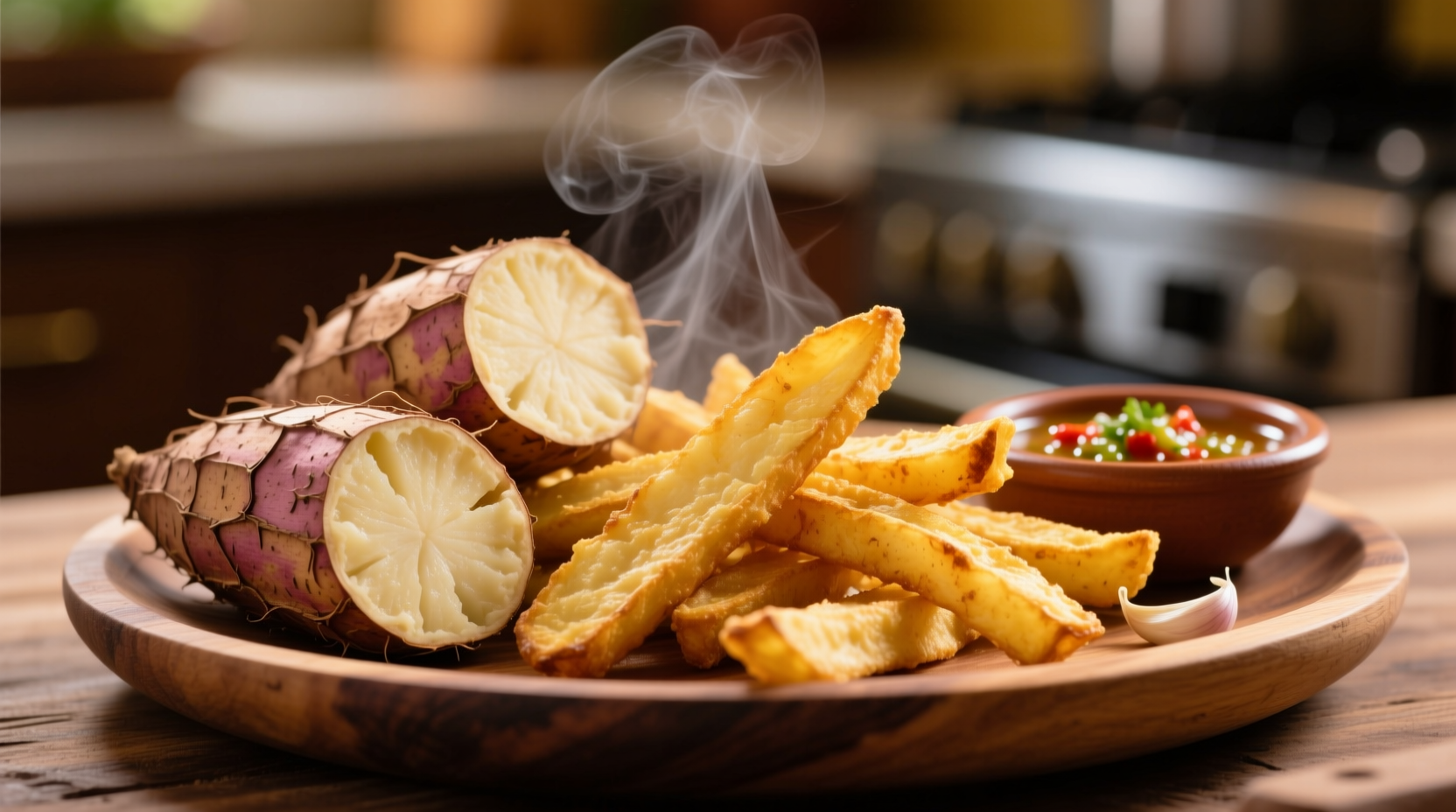Confused about yuca's taste profile? You're not alone. Many home cooks encounter this versatile root vegetable at Latin American markets or on restaurant menus and wonder how its flavor compares to familiar staples like potatoes. As someone who's studied traditional preparation methods across the Caribbean and South America, I can tell you exactly what to expect when cooking with yuca.
Understanding Yuca: More Than Just a Potato Substitute
Before we dive into flavor specifics, let's clarify what yuca actually is. Yuca (pronounced YOO-kuh, not yucca) is a starchy tuber native to South America that serves as a dietary staple for over 500 million people worldwide. Unlike its desert-dwelling namesake yucca, this tropical root vegetable has sustained civilizations for thousands of years. The confusion in names often leads people to expect completely different flavor characteristics.

Breaking Down Yuca's Flavor Profile
Yuca's taste experience unfolds in layers that change slightly depending on preparation method:
- Raw state: Bitter varieties contain cyanogenic glycosides (requiring proper preparation), while sweet varieties have a faintly sweet, earthy raw flavor
- Boiled: Develops a clean, neutral starchiness similar to potato but with subtle sweet undertones
- Fried: Takes on a nuttier profile with caramelized edges while maintaining a creamy interior
- Baked: Concentrates natural sugars, enhancing the mild sweetness
| Preparation Method | Flavor Characteristics | Texture | Best Culinary Uses |
|---|---|---|---|
| Boiled | Mild, slightly sweet, neutral base | Creamy, dense, moist | Mashed dishes, soups, stews |
| Fried | Nutty, caramelized edges, enhanced sweetness | Crispy exterior, fluffy interior | Yuca fries, tostones, chips |
| Baked | Concentrated natural sugars, earthy notes | Firm yet tender | Roasted sides, casseroles |
| Grated (for baking) | Neutral canvas for sweet or savory flavors | Moist, binds well | Cakes, breads, pancakes |
How Yuca Compares to Familiar Starches
Understanding yuca's taste becomes easier when comparing it to foods you already know. According to agricultural research from the University of Florida's Institute of Food and Agricultural Sciences, yuca contains approximately 30% more carbohydrates than potatoes but with a lower glycemic index, which affects how we perceive its sweetness (UF/IFAS Extension).
The flavor difference between yuca and potatoes is subtle but significant. While potatoes have a more pronounced earthiness, yuca offers a cleaner, slightly sweeter profile that makes it incredibly versatile. Unlike taro (which has a distinct nuttiness) or sweet potatoes (with their obvious sweetness), yuca sits in a perfect middle ground—neutral enough for savory applications yet sweet enough to work in desserts.
Why Preparation Method Dramatically Affects Flavor
The way you prepare yuca directly impacts its final taste profile. Traditional preparation methods developed over centuries address both safety concerns (with bitter varieties) and flavor optimization:
- Peeling: The thick, waxy skin contains bitter compounds—proper removal is essential
- Soaking: Many traditional recipes call for soaking cut pieces in water to remove residual bitterness
- Cooking time: Undercooked yuca remains unpleasantly dense; overcooked becomes mushy
- Seasoning timing: Adding salt early enhances flavor absorption during cooking
Research from the International Center for Tropical Agriculture shows that boiling yuca for 20-25 minutes in salted water produces optimal flavor development while safely reducing cyanogenic compounds in bitter varieties (CIAT).
Common Flavor Misconceptions Debunked
Several myths persist about yuca's taste that might be holding you back from trying it:
- "Yuca tastes like potato": While similar, yuca has a more neutral base with subtle sweetness potatoes lack
- "All yuca is bitter": Sweet varieties (most commonly sold in US markets) require no special detoxification
- "Yuca has no flavor": Its mildness is actually an advantage—it absorbs seasonings beautifully while contributing its own subtle notes
- "Processed yuca products taste the same": Frozen yuca fries often contain added sugars that alter the natural flavor profile
Practical Tips for Maximizing Yuca's Flavor
Based on field research across Latin American kitchens, here's how to get the best flavor from yuca:
- Choose firm roots with smooth skin—avoid those with dark spots or cracks which indicate bitterness
- Cook with aromatic ingredients like garlic, cumin, or bay leaves to enhance its neutral profile
- Add a splash of citrus juice after cooking to brighten the natural sweetness
- For frying, double-cook method (boil then fry) creates the perfect texture-flavor balance
- When making yuca bread or cakes, pair with tropical flavors like coconut or plantain for authentic taste
Professional chefs across Colombia and Venezuela consistently emphasize that yuca's magic lies in its ability to transform based on what you cook it with—making it the ultimate culinary chameleon. Unlike potatoes which maintain their distinct flavor, properly prepared yuca becomes whatever you need it to be in a dish.
When Yuca Might Taste Different Than Expected
Certain factors can significantly alter yuca's flavor profile:
- Variety differences: Over 5,000 varieties exist—sweet types dominate US markets while bitter varieties require special preparation
- Freshness: Older roots develop fibrous streaks that create unpleasant textures and bitter notes
- Soil conditions: Roots grown in volcanic soil often have more pronounced nutty flavors
- Storage: Refrigeration causes chilling injury that creates off-flavors—store at room temperature
Understanding these variables helps explain why your yuca experience might differ from others' descriptions. The USDA Agricultural Research Service notes that post-harvest handling significantly impacts flavor compounds in root vegetables like yuca (USDA ARS).











 浙公网安备
33010002000092号
浙公网安备
33010002000092号 浙B2-20120091-4
浙B2-20120091-4